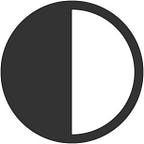In the following days, I will be posting about some design best practices I’ve learned at Lumenary. Please post any questions you may have in the comments section and I will address them.
—
I’m no artist. The last time I took an art class was in sixth grade, for which my gallant efforts were rewarded with a C-. Since then, my interactions with art have been limited to doodling stick figures. I was confident I could make my way through life without ever having to deal with art and design.
Nope. Working as an intern for Lumenary this summer, I realized this couldn’t be farther from the truth. Lumenary dedicates a lot of time to building beautiful digital products, marketing sites, and investor decks.
I used to think that investor decks only had to “get the point across”. There didn’t seem to be a need for design. Blocks of Arial text on a white background are readable, right? The in-house designers looked at me funnily when I asked them those questions. With entrepreneurship on the rise, standing out from the crowd of dollar-craving founders has become more difficult. In fact, the number of startups sprouting up in the United States has increased by 75% over the past five years.
Blocks of text written in Arial aren’t pleasing to read. And decks that aren’t easy to read don’t get read. And investor decks that don’t get read don’t get money.
Design, in the context of decks, isn’t about fancy shadow effects or etching in patterns inspired by cubism. It is about playing the supporting cast to ensure the content shines. One can picture the relationship between content and design like a burger patty and bun — you can’t do a good job without having both.
Apprenticing under Lumenary’s designers, I’ve learned some secrets to becoming America’s next Masterchef.
Do the prep work.
Make sure you have all the proper cookware before you start. You don’t want to be stuck having molded a perfect patty, only to discover you are missing a proper grill. Likewise, with designing decks, preparation will save you a lot of headache down the line.
Research — Do your due-diligence on your client and their competitors. Find out the norms for the industry your client operates in. It’s okay to sprinkle in your own creativity, but know doing research will protect you against committing taboo. For example, if your client is a funeral home, don’t pick bright colors that scream festivities. If anything, the research will ensure you don’t come up with something exactly like your competitors.
Content — Organize content given to you by the client in a concise manner. Having the content processed will give you a good feel for who your client is. It will also prevent you from having to worry during the design stage. As you process the content, take the time to understand the intent behind the company you are helping design for. This will enable you to infuse details that add emotional appeal.
Moodboards — Brainstorm a visual direction for the brand and their deck. Do this by putting together a graphic collage of your initial inspirations. Start by scrutinizing the content given to you. Then, look at close competitors, follow the client’s vision, or even borrow from their existing branding. Moodboards can contain a compilation of textures, screenshots, photographs, and even sketches. Once you have created at least 3 drafts, pick out the best fit with your client and finish a design direction.
Design Direction — Distill information from the selected moodboard. Now is when you create the specific look and feel of the deck, selecting elements like the typography and color palette.
The design direction is the foundation upon which you build the slides. It is your special set of kitchenware to craft a beautiful dish.
Cooking Tips:
Using the initial design direction, cook up a few sample slides and ask your client for feedback. Season and adjust to taste.
—
Make sure to follow us on Twitter! Tomorrow we will dive into selecting typography.
